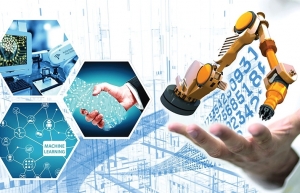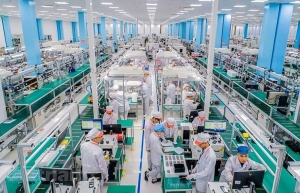5G remains strategic imperative for enterprises, governments in 2021
 |
| Keysight 2021 Predictions highlights the main industry trends |
In 2020, the world experienced an unprecedented public health crisis – the coronavirus pandemic. This has impacted all sectors of society and forced enterprises, small businesses, governments, and private institutions to pivot, in some cases extensively, to accelerate digital transformations and rethink the way innovation is achieved.
There are shape-shifting business operations and technology trends that are unfolding through the lens of the pandemic, the effects of which will continue to have lasting effects on organisations and society.
5G deployment trend:
- 5G to be the focus of intense international interest as 5G networks will drive improvements in power, energy, and financial infrastructures. However, cell-site zoning issues and related policy will become a bigger issue for national and local governments.
- 5G will move beyond the smartphone into industrial use cases and the enablement of virtualised healthcare delivery and procedures.
- Manufacturing and network rollouts will catch up with 2020 device launches, and there will be a greater diversification of 5G devices with multiple price points.
- Dynamic spectrum sharing (DSS) and new national spectrum policies will drive widespread 5G deployment as accessibility to user equipment grows to address current coverage issues and cost of deploying mid-band spectrum.
The growing acceptance of working remotely:
The distributed and remote workforce has gained new respect and acceptance, especially for technology innovation, leading to a mix of remote and on-site work environments, which have become, and will remain, the norm even as the pandemic eases.
- Collaboration technologies and practices have and will continue to take on new significance. Technology businesses will escalate the formation and organisation of mission-critical innovation teams that will be managed remotely.
- Engineers, and other innovators, will need to return to on-site, in-person collaboration but will be more intentional and strategic about when to do so.
- Enterprise sales organisations will undergo a significant transformation as hybrid salesforces (mix of in-person and virtual) apply new methods for relationship-building and learning objectives, as well as alternative ways to provide product and solution demonstrations remotely.
Software will also be critical to digital transformations:
The pace of innovation will accelerate in 2021. The adoption of digital tools, processes, and software-led solutions will change the speed at which enterprises innovate, grow, support customers, and conduct business.
- Enterprises will speed transformations using software that improves productivity, efficiency, accuracy, security, and time-to-market by collecting and acquiring information digitally, coupled with the use of advanced analytics and data visualisation to gain insights needed to accelerate innovation.
- Greater emphasis on new software solutions for design, test, and validation, as well as for the analysis and interpretation of those results, specifically for:
- Research and development measurements and analytics as more experiments and iterations need to be tested. Engineers will need in-depth analysis of data which will require richer automation capabilities beyond the basics.
- Complex design and simulation as electronic packaging environments become more complex, requiring measurements of power flow, heat, and assembly while validating prototypes to ensure that designs are working as intended.
- Security will take on a new meaning in 2021. Developers will address potential security issues, including security testing, much earlier in the design cycle. Greater emphasis will be placed on how products will be deployed, the use of touchless and contactless technology, removing human intervention, and fully automating networks that self-heal.
- User experience will continue to grow in importance for both customers and providers of software solutions of all types due to the increased role such solutions play in professional and personal contexts, and the ever-increasing expectations resulting from frustrations with mediocre experiences.
Greater investment in the infrastructure that enables the Internet of Things and Industrial Internet of Things (IoT and IIoT), including distributed cloud and hyper-connectivity:
Private 5G networks for industrial enterprises will be emphasised, which will facilitate, among other things, remote operation and management.
- A growing remote workforce will fuel IIoT which will require enterprises to deploy intelligent equipment to effectively manage manufacturing and factory operations from a distance. As a result, expect:
- Increased investment in automation and use of robotics and machine learning to manage facilities, as well as a growing acceptance in leveraging the cloud to automate production lines.
- New solutions for manufacturing automation, testing, and analytics for all components as automotive and other facilities ramp up.
- Greater investment in IIoT functions for real-time, predictable control, which will require an increase in the number of machines and sensors, and a network infrastructure that can manage this growing number of devices.
Although early, expect accelerated levels of investment in quantum computing:
For 2021, quantum enters a robust research phase in which the primary players will continue to experiment and invest in quantum research for the future.
- Today there are many competing qubit technologies – leading ones include superconducting, trapped ion, silicon spin, as well as photonic implementations. These technologies will continue to evolve in 2021 at a rapid pace.
- The materials research aspect of quantum will heat up in 2021. This will be supported by a robust investment pipeline, some of which will be funded by major governments as they learn more about the geopolitical and economic advantages of quantum computing.
- An increasing number of customers will be accessing time on quantum computers in the cloud in 2021 to run new algorithms to find quantum advantage. More players will enter providing quantum computers, cloud services, or both in 2021, as well as expanding the power of the computers available to users.
Autonomous vehicle (AV) development will continue to evolve:
The automotive sector suffered headwinds due to the pandemic, however production and manufacturing will roar back.
- As the number of sensors powering in-vehicle networks continues to escalate, in-vehicle networks will need to keep pace.
- Electronic vehicle (EV) sales will increase, yet they are only a small percentage (3 per cent) of total automotive manufacturing. While traditional vehicle manufacturing stalls, interest in EV will pick up as countries face more stringent emissions standards.
- AV investment will be modest in the first half of 2021 but will pick up in the second half. It will be more aggressive in Greater China as this region is committed to phasing out conventional gas-burning vehicles by 2035.
- The US will be more focused on AV and EV development in 2021 with the change of presidential administration which supports these technologies.
What the stars mean:
★ Poor ★ ★ Promising ★★★ Good ★★★★ Very good ★★★★★ Exceptional
Related Contents
Latest News
More News
- TECHFEST Vietnam 2025 links startups with policy and capital (December 15, 2025 | 18:21)
- MST to allocate $3.8 billion for sci-tech in 2026 (December 15, 2025 | 18:10)
- Long Thanh International Airport welcomes first Vietnam Airlines test flight (December 15, 2025 | 18:01)
- Health Innovation Hub: accelerating health equity through digital healthcare innovation (December 15, 2025 | 08:00)
- Vietnam’s first AI Law to take effect from March 2026 (December 12, 2025 | 09:00)
- Chi Communications joins SEA CAN alliance (December 11, 2025 | 17:39)
- New Law on High Technology sets incentives and safeguards (December 11, 2025 | 09:00)
- IBTE 2025 to return to Ho Chi Minh City this December (December 11, 2025 | 09:00)
- Masan posts steady gains as Vietnam targets stronger retail growth (December 10, 2025 | 18:58)
- Seafood exports to Japan surge towards new annual record (December 10, 2025 | 18:50)





 Tag:
Tag:


























 Mobile Version
Mobile Version